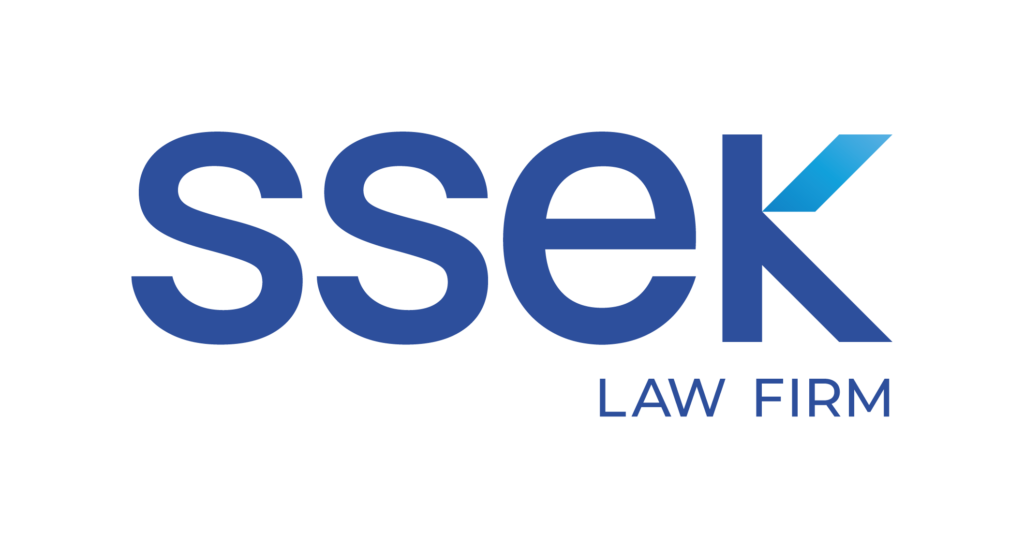Revamping Indonesia’s TKDN Rules: What MOI Reg. 35/2025 Means For Industry.
On September 11, 2025, the Indonesian Minister of Industry issued Regulation No. 35 of 2025 regarding the Provisions and Procedures for the Certification of Domestic Component Level (Tingkat Komponen Dalam Negeri or “TKDN”) and Company Benefit Weight (Bobot Manfaat Perusahaan or “BMP”) (“MOI Reg. 35/2025”).
This new regulation replaces and updates the longstanding framework under Minister of Industry Regulation No. 16/M-IND/PER/2/2011 concerning Provisions and Procedures for Calculating Domestic Component Level (“MOI Reg. 16/2011”), which had been in place for more than a decade and was increasingly viewed as no longer adequate to address the fast-changing and competitive needs of industry.
The Minister of Industry, Agus Gumiwang, stated that the reform was part of Indonesia’s broader deregulatory agenda aimed at reducing trade barriers, facilitating investment and strengthening the domestic industrial ecosystem. He emphasized that the overhaul of TKDN rules was driven by the urgent need to modernize a regulatory framework that had stood unchanged for more than 14 years. The goal is to ensure that TKDN genuinely reflects local contributions, empowers domestic enterprises and enhances Indonesia’s competitiveness in an increasingly integrated global economy.
In addition to repealing MOI Reg. 16/2011, MOI Reg. 35/2025 formally revokes a series of other related regulations, as follows:
- Minister of Industry Regulation No. 2 of 2014 regarding Guidelines for Increasing the Use of Domestic Products in the Procurement of Government Goods/Services (“MOI Reg. 2/2014”);
- Minister of Industry Regulation No. 3 of 2014 regarding Guidelines for Increasing the Use of Domestic Products in the Procurement of Goods/Services of the Government Not Financed by the State Budget/Regional Budget (“MOI Reg. 3/2014”); and
- Minister of Industry Regulation No. 46 of 2022 regarding Provisions and Procedures for Calculating the Domestic Component Level Value for Small Industries (“MOI Reg. 46/2022”).
MOI Reg. 35/2025 effectively consolidates the revoked regulations into one single framework, and will take effect on December 11, 2025, three months after its issuance.
MOI Reg. 35/2025 applies only to TKDN for (i) goods; (ii) services exclusively categorized as “Industrial Services” within the KBLIs listed in Attachment III of the regulation; and (iii) mixed goods and services.
Attachment III of MOI Reg. 35/2025sets out the following categories of services that are within the scope of the regulation:
- Industrial Design and Construction Services;
- Industrial Equipment Installation and Commissioning Services;
- Industrial Research, Engineering and Design Services;
- Industrial Process Services;
- Maintenance and Repair Services;
- Industrial Management Consultancy Services;
- Certification, Testing, Inspection and Calibration Services;
- Packaging Services;
- Industry 4.0 Support Services;
- Environmental and Sustainability Services;
- Publishing, Printing and Creative Content Services; and
- Performance and Efficiency Support Services.
The applicable TKDN framework for services outside the Industrial Services categories listed in Attachment III of MOI Reg. 35/2025 will continue to be governed by other regulations. For example, for the upstream oil and gas sector, TKDN requirements continue to be governed by Minister of Energy and Mineral Resources Regulation No. 15 of 2013 on the Use of Domestic Products in Upstream Oil and Gas Business Activities (“MEMR Reg. 15/2013”), as further detailed in MEMR Decree No. 232.K/HK.02/DJM/2024 on Guidelines for the Verification of Domestic Component Level and the Qualification of Verifiers of Domestic Component Level (“MEMR Decree 232/2024”).
Additionally, the TKDN and/or BMP certificates issued pursuant to the MOI regulations listed under Article 72 of MOI Reg. 35/2025, including TKDN certificates for Battery Electric Vehicles and for Electronic and Telematics Products, will remain valid and applicable following the enforcement of this regulation. However, any applications for the calculation and verification of TKDN and/or BMP values that are still in process must be adjusted to comply with the provisions of MOI Reg. 35/2025.
In addition to consolidating the revoked regulations, MOI Reg. 35/2025 introduces substantive changes to the TKDN and BMP regimes, which stand on four main pillars: (i) expanding incentive schemes; (ii) simplifying TKDN calculation methods and extending the validity period of TKDN certificates; (iii) introducing a self-declaration TKDN mechanism for small industries; and (iv) streamlining the verification and certification process.
In this article, we highlight the key changes introduced by MOI Reg. 35/2025 and their potential implications for industry players and stakeholders engaged in the procurement of goods and/or services, as well as compliance with TKDN requirements.
- Expanded Incentive Schemes
In line with the government’s aspirations to stimulate business activity, attract foreign investment and strengthen the domestic workforce, MOI Reg. 35/2025 introduces several new incentive schemes. The most notable addition is that companies engaging local talent in research, development and other “brainware” activities may obtain up to an additional 20% TKDN value for their TKDN Goods Certificate.
The calculation of this intellectual capability is based on the cumulative value of four factors: (i) investment in research and development over the past five years; (ii) the existence of an in-house research and development unit; (iii) the availability of research and development programs; and (iv) the utilization of research and development results in production activities.
In addition, BMP incentives of up to 15% are now available under a significantly expanded set of categories. Under MOI Reg. 16/2011, only four categories qualified for BMP scoring: (i) empowerment of micro and small enterprises, including small cooperatives, through partnerships; (ii) possession of occupational health and safety certificates as well as environmental management certificates; (iii) community development initiatives; and (iv) provision of after-sales service facilities. MOI Reg. 35/2025 expands this framework to 15 categories, offering more opportunities for companies to achieve the maximum 15% BMP score, including those that implement strategic programs designated by the MOI.
Taken together, these changes significantly broaden the scope of TKDN and BMP incentives, creating stronger opportunities for both domestic and foreign businesses to align with national industrial policies while gaining competitive advantages in procurement processes.
- Simplification of TKDN Calculation Formula
MOI Reg. 35/2025 specifies that the TKDN calculations under this regulation apply to three categories: (a) Goods; (b) Industrial Services under specific Standard Classifications of Indonesian Business Fields (Klasifikasi Baku Lapangan Usaha Indonesia or “KBLI”) as listed in Attachment III of MOI Reg. 35/2025; and (c) Mixed Goods-and-Services. The calculation methods for each category have been revised from the original formulas under MOI Reg. 16/2011 for simplicity. We discuss each of these categories below.
- Goods
For goods, MOI Reg. 35/2025 introduces a fundamental change to the methodology for calculating TKDN compared with the earlier approach under MOI Reg. 16/2011. Under MOI Reg. 16/2011, TKDN was calculated using a cost-based formula, specifically, the ratio of the finished goods price (excluding foreign components) to the overall finished goods price. The finished goods price was defined as production costs consisting of direct materials, direct labor and factory overhead, with profit, company overhead and VAT expressly excluded.
MOI Reg. 35/2025 departs from this approach by adopting a factor-weighted approach, under which TKDN is now determined based on the sum of weighted contributions of three production factors: (i) direct materials (75%); (ii) direct labor (10%); (iii) and factory overhead (15%). Rather than relying solely on a cost-based ratio, the calculation is now component-based, reflecting the percentage of domestic content derived from each main component, proportionate to its use in the production of a single unit of goods.
A comparison of the key provisions under MOI Reg. 16/2011 and MOI Reg. 35/2025 is presented below.
| Article 2 of MOI Reg. 16/2011 | Article 4 of MOI Reg. 35/2025 |
| The TKDN of goods shall be calculated based on the ratio between the price of the finished goods minus the foreign component price and the price of the finished goods.The price of finished goods as referred to in paragraph (1) shall be the production costs incurred to produce the goods.The production costs as referred to in paragraph (2) shall include:direct material costs;direct labor costs; andfactory overhead costs;excluding profit, company overhead, and Output VAT. | The TKDN value of goods shall be calculated based on production factors, which include:direct materials, weighted at 75%;direct labor, weighted at 10%; andfactory overhead, weighted at 15%.The TKDN value of goods shall be obtained from the accumulation of the weighted production factors as referred to in paragraph (1), incurred to produce one unit of goods. |
MOI Reg. 35/2025 provides a significantly more detailed framework regarding the calculation of the production factors for TKDN for goods compared to MOI Reg. 16/2011. The new regulation introduces specific criteria and percentage-based scoring for each component:
- For direct materials, the percentage credit depends on whether the component has a TKDN certificate and, if not, whether it is produced domestically or sourced from local natural resources;
- For direct labor, the credit is tied not only to the proportion of Indonesian workers employed but also to the ownership and location of the production facility, ranging from 100% (if at least 50% of workers are Indonesian nationals and the work is carried out in the company’s own factory) down to 0% (if fewer than 50% of workers are Indonesian nationals); and
- For factory overhead, a similar tiered system applies. Businesses that invest and produce in their own domestic facility receive 100% credit. If production is carried out in another company’s facility in Indonesia, the credit is reduced to 60% when the company itself conducts the production activities in that facility, or 30% when the production is performed by the other company in its own facility. No credit (0%) is given if the business does not invest in Indonesia.
In short, MOI Reg. 35/2025 moves away from a simple cost-allocation model and establishes tiered benchmarks that are intended to ensure that TKDN values reflect real domestic production activities rather than being artificially inflated.
- Industrial Services
Under MOI Reg. 16/2011, TKDN for services was calculated by comparing the total service price, excluding foreign service elements, against the overall service price. The three cost components were defined as: (i) labor; (ii) work equipment/facilities; and (iii) general service costs, expressly excluding profit, company overhead and VAT.
MOI Reg. 35/2025 retains the core structure of this cost-based calculation but significantly narrows its scope to “Industrial Services,” limited to the specific KBLIs under Attachment III of MOI Reg. 35/2025. In the new formula, the same three cost components are still used as the basis for calculation.
MOI Reg. 35/2025 also maintains the provision that TKDN calculations are not limited to the immediate inputs of the service provider or manufacturer, as domestic contributions from second-level suppliers may also be included, and where third-level components or services are carried out domestically, these are deemed to have 100% domestic content. However, MOI Reg. 35/2025 no longer expressly excludes profit, company overhead and VAT, reflecting a shift toward a simpler and less prescriptive approach.
A comparison of the key provisions under MOI Reg. 16/2011 and MOI Reg. 35/2025 is presented below.
| Article 8 of MOI Reg. 16/2011 | Article 14 of MOI Reg. 35/2025 |
| The TKDN for services shall be calculated based on the ratio between the total service price minus the foreign service price and the total service price.The total service price as referred to in paragraph (1) shall be the costs incurred to produce the services calculated up to the work site (on site).The costs incurred as referred to in paragraph (2) shall include:labor costs;work equipment/facility costs; andgeneral service costs;excluding profit, company overhead, and Output VAT. | The calculation of the TKDN value for Industrial Services shall be based on the ratio between the total Industrial Service cost minus the foreign Industrial Service cost and the total Industrial Service cost.The total Industrial Service cost as referred to in paragraph (1) shall be the costs incurred to produce Industrial Services calculated up to the work site.The costs as referred to in paragraph (2) shall include:labor costs;work equipment/facility costs; andgeneral service costs. |
- Mixed Goods and Services
Lastly, for Mixed Goods and Services, MOI Reg. 35/2025 revises the methodology for calculating the combined TKDN of goods and services in a way that departs from the cost-based approach under MOI Reg. 16/2011. Previously, the combined TKDN was calculated as a ratio of the domestic component value of goods and services against their total value, with explicit reference to production costs for goods and services and detailed cross-references to the respective cost elements, including rules for work equipment and facilities.
In contrast, MOI Reg. 35/2025 introduces a proportional weighting mechanism, requiring the aggregation of the TKDN value of goods multiplied by their acquisition value proportion and the TKDN value of services multiplied by their acquisition value proportion. This refinement replaces the earlier reliance on detailed cost categories with a more formula-driven structure, aligning the calculation with acquisition values rather than raw production costs. The result is a clearer, more standardized methodology that facilitates consistent verification.
A comparison of the key provisions under MOI Reg. 16/2011 and MOI Reg. 35/2025 is as follows:
| Article 11 of MOI Reg. 16/2011 | Article 14 of MOI Reg. 35/2025 |
| The combined TKDN of goods and services shall be the ratio between the total domestic component value of goods plus the total domestic component value of services and the total value of goods and services.The total value of goods and services as referred to in paragraph (1) shall be the costs incurred to produce the combined goods and services, calculated up to the work site (on site).The combined TKDN of goods and services as referred to in paragraph (1) shall be calculated for each activity involving combined goods and services.The costs incurred as referred to in paragraph (2) shall include production costs in the calculation of TKDN for goods as referred to in Article 2 paragraph (3) and service costs in the calculation of TKDN for services as referred to in Article 8 paragraph (3).The determination of the domestic component for work equipment/facilities as referred to in paragraph (4)(b) shall follow the provisions as applied in Article 2 paragraph (6).The combined TKDN of goods and services shall be used, among others, in the calculation of TKDN for Construction Works and for Integrated Construction Works. | The calculation of the combined TKDN value of Goods and Services shall be carried out by aggregating the multiplication of the combined TKDN value of Goods with the proportion of the acquisition value of Goods and the multiplication of the TKDN value of Services with the proportion of the acquisition value of Services.The total combined TKDN value of Goods and Services as referred to in paragraph (1) shall be the value obtained to produce the combined Goods and Services, calculated up to the work site.The combined TKDN value of Goods and Services shall be calculated for each activity involving combined Goods and Services. |
For the TKDN Calculation of Goods and Services, MOI Reg. 35/2025 introduces refinements to the percentage calculation method for determining the domestic content of tools and facilities. Under the new framework, full credit (100%) is now granted for equipment manufactured in Indonesia, regardless of ownership, whereas under MOI Reg. 16/2011 such credit could be reduced where the ownership was foreign. Conversely, for equipment manufactured abroad, the credit has been significantly reduced, capped at 50% or less even if domestically owned, compared to the higher percentages available under MOI Reg. 16/2011.
Lastly, aside from the changes to the formulas for determining the TKDN score, the validity period has also been revised under MOI Reg. 35/2025. Under MOI Reg. 3/2014, the validity period for TKDN and BMP recognition was limited to three years, with the possibility of renewal through a new verification conducted before the expiration of the existing term. Business actors that had obtained official recognition of TKDN achievement were also permitted to display the TKDN value on their products.
MOI Reg. 35/2025 adopts a more streamlined and standardized approach by expressly incorporating TKDN and BMP values into a formal TKDN Certificate, which remains valid for a fixed period of five years from issuance. This change eliminates the rolling verification system under the previous regime, requiring businesses to reapply once the certificate expires. However, similar to the prior framework, businesses that obtain official recognition of TKDN achievement are permitted to display the TKDN mark and value on their products.
Overall, the new formulas and procedures under MOI Reg. 35/2025 provide greater certainty and administrative efficiency for businesses by clarifying the mechanism for recognizing both TKDN and BMP values while extending the certification period.
- Convenience for Small Industries
MOI Reg. 35/2025 also introduces measures to ease the certification process for small industries. Building on the framework previously set under MOI Reg. 46/2022, the regulation now formalizes a self-declaration scheme, under which small industry players may conduct their own TKDN calculations and apply for a certificate directly. Certificates issued under this scheme are valid for five years, an improvement from the three-year validity period under the earlier regulation.
To use the self-declaration mechanism, small industries must be registered in the National Industrial Information System (Sistem Informasi Industri Nasional or “SIINas”) platform under the Ministry of Industry and undergo validation by a senior ministry official responsible for the development and supervision of small industries. The validation process is carried out by a dedicated team and confirmed by the Director General.
Importantly, TKDN calculations for small industries must now follow the same weighted production factors applied to general industries, consisting of direct materials (75%), direct labor (10%) and factory overhead (15%). This replaces the formula under MOI Reg. 46/2022, which applied different production factors and weightings: materials (24%), labor (10%), factory overhead (4%), and development (2%). The assessment of each of these production factors for small and medium-sized industries continues to follow the general TKDN rules for goods.
Overall, these reforms significantly reduce the administrative burden on smaller businesses, while ensuring that TKDN calculations remain consistent and transparent across all industry players.
- Streamlined Certification Procedures
The final change under MOI Reg. 35/2025 relates to efficiency, as the new regulation significantly shortens the TKDN certification timeline. Businesses can now obtain a TKDN Certificate or TKDN Statement Letter in nine working days from submission (provided no revisions are required) through an Independent Verified Body (Lembaga Verifikasi Independen or “LVI”) appointed by the Minister of Industry to conduct TKDN and/or BMP verification. The Minister of Industry has stated that this acceleration represents a significant reduction from the 22 working days under the previous regime.
For small-sized industries using the self-declaration scheme, the process has also been accelerated, with certificates now issued within three working days, reduced from the five working days under MOI Reg. 46/2022. This streamlining was achieved by cutting the approval process from four layers to two, making certification faster and more efficient.
Sanctions
MOI Reg. 35/2025 also introduces a clear sanctions regime for non-compliance. Holders of a TKDN Certificate may be subject to administrative penalties if they: (i) submit false documents or information in connection with the calculation or verification of TKDN or BMP values; (ii) fail to fulfil commitments relating to TKDN values or the results of verified TKDN; (iii) produce industrial goods or services that are inconsistent with the documents submitted at the time of certification; or (iv) engage in forgery of a TKDN Certificate. Sanctions may include written warnings, suspension or revocation of TKDN certificates, and blacklisting.
Conclusion
MOI Reg. 35/2025 introduces major reforms that expand incentives, simplify calculations, extend certificate validity and accelerate certification. In practice, the regulation is expected to make it easier for companies to participate in procurement projects involving central and regional governments, as well as state-owned and regional-owned enterprises, where TKDN requirements apply. For both domestic and foreign investors, the new regime offers enhanced opportunities to contribute to Indonesia’s industrial development while supporting local content growth and workforce empowerment.
Businesses are strongly encouraged to evaluate their eligibility and consider applying for TKDN certification under the new framework to maximize incentives and strengthen their competitive position in the Indonesian market. (7 October 2025)








